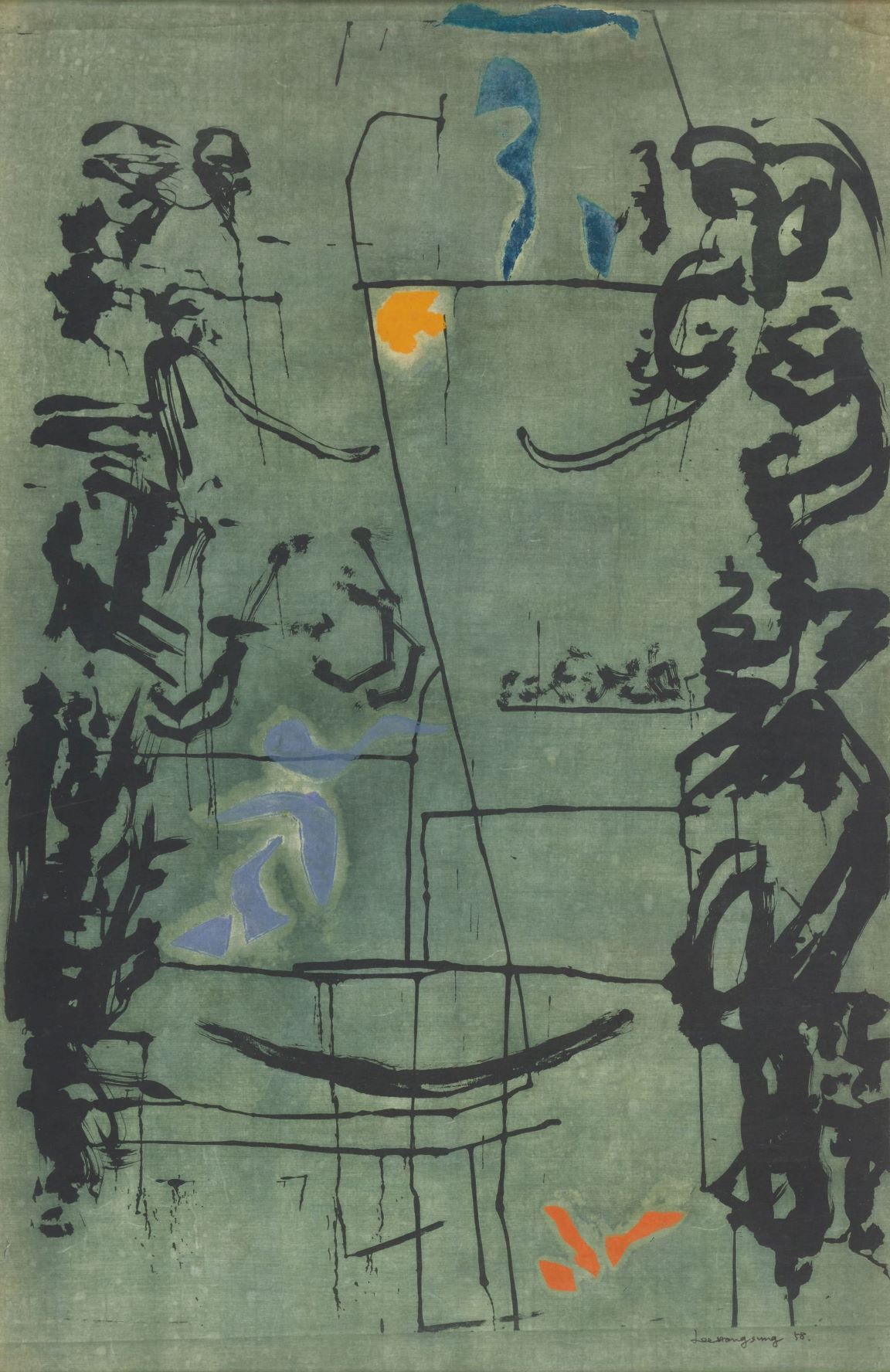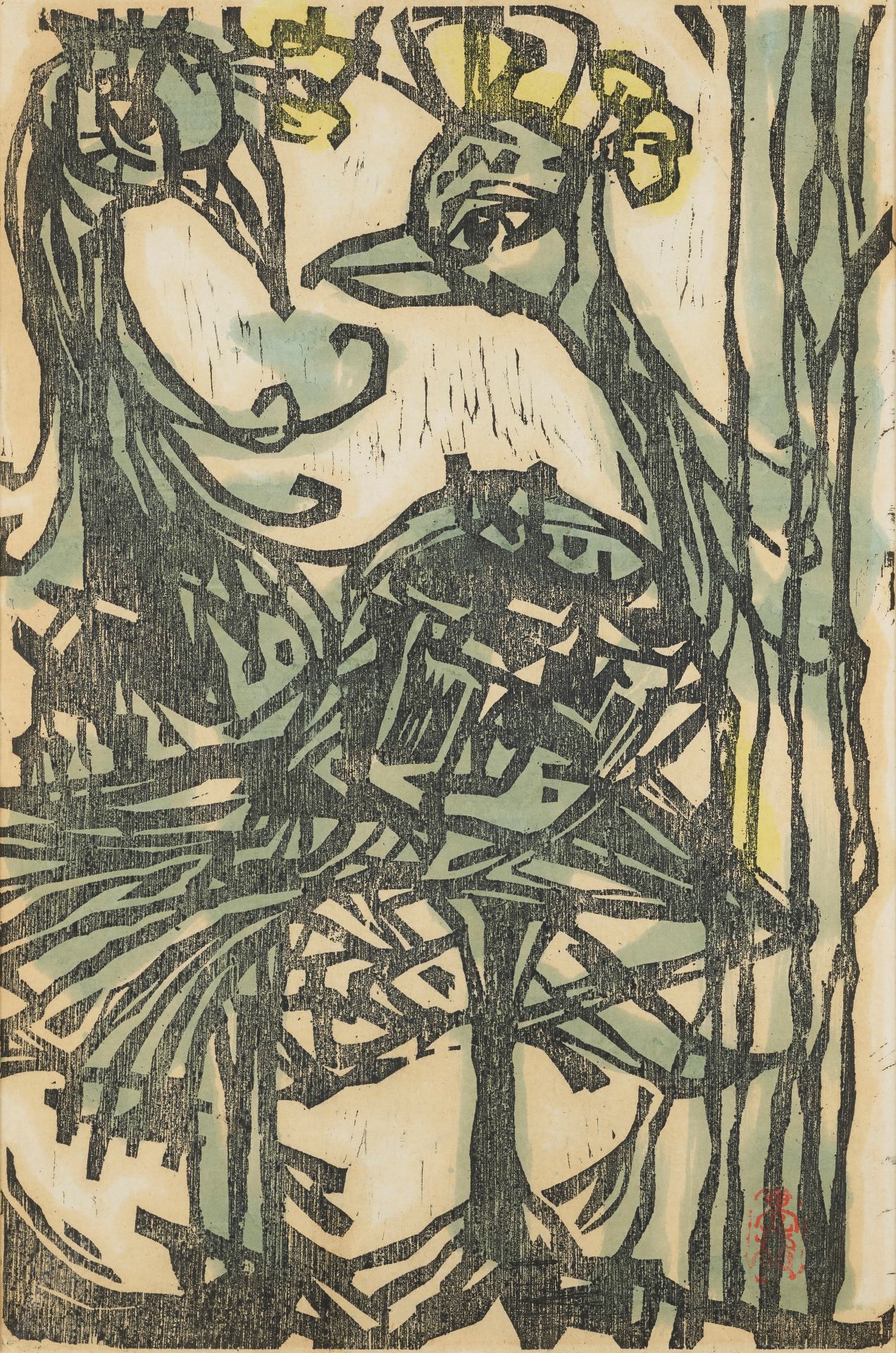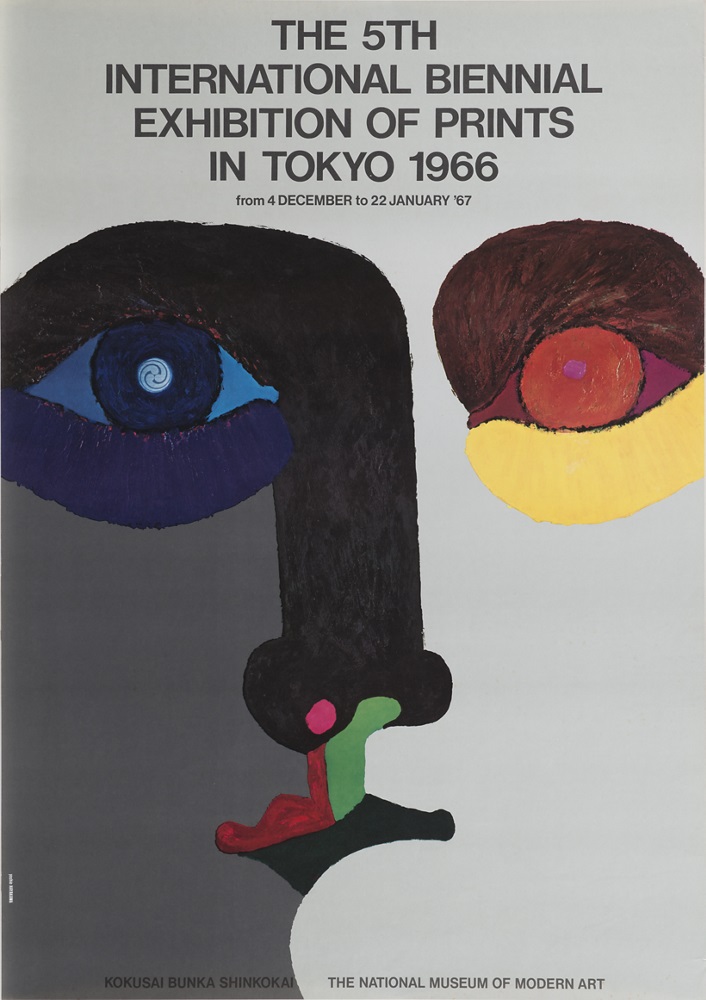
The Fifth International Biennial of Contemporary Color Lithography, Brochure, 1958, MMCA Art Research Center Collection, Gift of Chang Chungsoon and Shin Youngok
International Biennial of Contemporary Color Lithography
* Source: MMCA
Related
-

Lee Hangsung
Lee Hangsung (1919-1997) was a Western-style painter and printmaker who pioneered Korean contemporary printmaking and a leading publisher who promoted the publication and dissemination of art books. He learned painting from Kwon Jungrok, a Western-style painter active in Daejeon, and worked as a stage artist at Dongyang Theatre in Seoul. In 1945, he established a publishing company Munhwa Gyoyuksa and published art textbooks for elementary, middle, and high schools and art books such as Seoyang misulsa (History of Western art) and Segye misul jeonjip (Collection of world art). In 1956, he established another publishing company Sinmisulsa and published Sin Misul (New art), the first art magazine in Korea, thus exerting influence upon the formation of the culture of art criticism. Lee Hangsung led the founding of the Korea Prints Association [Hanguk panhwa hyeophoe] along with Yoo Kangyul, Chung Kyu, Choi Youngrim, and others. In 1958, Lee held the first solo exhibition of lithographs by a Korean artist. Winning an honorable mention for the lithograph Tender Heart of the Buddha at the fifth International Biennial of Contemporary Color Lithography held in 1959 at Cincinnati Art Museum in the U.S., he secured his place in the Korean art scene as a printmaker. Later, he produced print works using Joseon-era wooden blocks that were used for printing old books, letterheads, book covers, and those for imprinting patterns on rice cakes. In his later years, he continued to create works that revealed his Eastern spirituality by pictorializing Chinese characters, such as “念” (yeom, meaning idea), “情” (jeong, meaning affection), “思” (sa, meaning thought), and “心” (sim, meaning mind). Lee contributed to the development of art education by serving as president of the Korean Art Education Association [Daehan misul gyoyuk gyeophoe] and chairman of the Korean Committee of the International Society for Education [Gukje misul gyoyuk hyeophoe hanguk wiwonhoe].
-

Kim Sou
Kim Sou (1919-2014) was the second son of Kim Yeongguk, a chief-officer of Hamhung, Hamgyongnamdo and Lee Bugap, who worked as an instructor at a cocoonery in Changdeokgung Palace. He graduated from Hamgyong High School and later the Department of Western Art at Tokyo School of Fine Arts. After independence, he held a solo exhibition before moving to Paris to attend the Académie de la Grande Chaumière in 1955. There he studied configuration theory based on Cubism and Chromatics. After returning to Korea, he submitted his works to the National Art Exhibition and the Congress for Cultural Freedom Invitational Exhibition, before moving to the U.S. between 1967 to 1979. He worked as a visiting professor at Moore Art College in Philadelphia, a lecturer at the Pennsylvania Academy of the Fine Arts, as an art education instructor at the Philadelphia Museum of Art. In 1977, he organized a commemoration exhibition to celebrate his tenth year in the U.S. His work was based on the notion of a Plasticism that pursued the harmony between two extremes, such as Yin and Yang, movement and stillness, and realism and abstraction. He gained international recognition and was invited to exhibit at Musée du Luxembourg in Paris in 1990, the Pushkin State Museum of Fine Arts in Russia in 1993, and the State Hermitage Museum in St. Petersburg.
-

Yoo Kangyul
Yoo Kangyul(1920-1976) was a Korean printmaker and dye craftsman who engaged in diverse activities from the late 1940s through the early 1960s. He entered the Azabu Middle School in Tokyo in 1933 and graduated from the Craft and Design Department at Nihon Art School in 1944. In 1941, while studying in Japan, Yoo’s work was selected for the Japanese Craftspeople Association Exhibition. He received apprenticeship education on dyeing at the Saito Craft Institute. After returning to Korea, Yoo worked as a principal lecturer and researcher at Lacquerware Inlaid with Mother-of-Pearl Training Center and Korean Plastic Arts and Culture Research Institute. In 1958, he received Rockefeller Foundation scholarship to study printmaking at New York University and the Pratt-Contemporaries Graphic Art Centre. He was later appointed as a professor at Hongik University and served until 1976. He was also active as an architectural advisor and interior designer. Among his notable works are the exhibition design for Anti-Communist Exhibition Hall of the Freedom Center (1966) and the Ceramic Mural for the National Assembly (1974). Yoo Kangyul founded the Korean Contemporary Printmaker Association [Hanguk hyeondae panhwaga hyeophoe] in 1968 to develop Korean printmaking. Moreover, he served as a judge of the Korean Art Grand Award Exhibition in 1969, a standing committee member for the construction of the National Museum of Korea in 1970, and a head judge for the National Tourist Folk Art Competition from 1971 to 1976. He won many awards including the Minister of Education Award (1953) and the Prime Minister Award (1954) at the National Art Exhibition (Gukjeon) and a presidential prize for the interior design of the National Museum of Korea (1970). Yoo did not hold a solo exhibition during his lifetime, but in 1978 Kyang Yul Yoo’s Exhibition was organized by his students and the National Museum of Modern Art, Korea (now MMCA). In 1981, Collection of Works by Yoo Kangyul was published. In 2000, his bereaved family donated Yoo’s collection to the MMCA and the National Museum of Korea.
Find More
-

International Biennial Exhibition of Prints in Tokyo
The International Biennial Exhibition of Prints in Tokyo was an international print exhibition held in Japan eleven times from 1957 through 1979. Initially, it was co-hosted by The National Museum of Modern Art, Tokyo and The Yomiuri Shimbun newspaper company. In the fifth edition, the International Cultural Promotion Association (Kokusai bunka shinkōkai) replaced The Yomiuri Shimbun, strengthening the nature of cultural exchange. Over twenty-two years, a total of 1,317 artists (1,098 foreign artists and 219 Japanese artists) participated in the International Biennial Exhibition of Prints in Tokyo, with approximately 3,000 works submitted. The International Biennial Exhibition of Prints in Tokyo is one of the international exhibitions in which a large number of Korean artists took part. This is partly owing to geographical proximity, but active exchanges with Japanese art circles in the 1970s also encouraged their participation. Korean artists consistently participated from the fifth edition to the eleventh. Yoo Kangyul, Kim Chonghak, and Youn Myeungro joined the fifth edition (1966); Bae Yoong, Suh Seungwon, and Ahn Dongguk, the sixth edition (1968); Kim Tchahsup, Ha Chonghyun, and Lee Ufan, the seventh edition (1970); Kim Sangyu, Kim Tschang-yeul, and Kwak Duckjun, the eighth edition (1972); Lee Ufan, Kim Kulim, and Chung Chanseung, the ninth edition (1974); Lee Kangso, the tenth edition (1976); and Suh Seungwon, Shim Moonseup, Kwak Duckjun, Chin Ohcsun, and Lee Ufan, the eleventh (1979). Among these participating artists, Kim Chonghak received an honorable mention in the fifth, and Kwak Duckjun won the Minister of Education Award in the eighth. In the eleventh, Chin Ohcsun won the Minister of Foreign Affairs Award and Lee Ufan won the Kyoto National Modern Art Award. In the eighth, the art critic Lee Il participated as an international judge. The International Biennial Exhibition of Prints in Tokyo exerted a considerable influence upon the development of Japanese contemporary prints and played a role in anchoring prints in the postmodern discourse of “de-genre” and “de-media” in conjunction with contemporary art. Witnessing the interest in prints not just from Japanese art circles but also from the international art community through the exhibitions, Korean artists became more interested than ever in prints, which emerged as a major medium of expression in contemporary art. Since the 1970s, there has been a significant increase in the number of artists working in printmaking.
-

Seoul Print Art Fair
The Seoul Print Art Fair was an international art fair held ten times from 1995 to 2004 by the Korean Print Art Promotion Association [Hanguk panhwa misul jinheunghoe]. Founded in 1995, the Korean Print Art Promotion Association hosted the fair in an effort to revitalize Korean print art and establish a competitive sample market for building a global print distribution network. The launching of the fair was made possible by dedicated efforts of the printmaker Kim Sangku, and it was modeled after the French print fair SAGA. Fifty-seven domestic and overseas galleries, workshops, and related enterprises participated in the first Seoul Print Art Fair held in 1995. At the first edition held at Seoul Arts Center, many galleries exhibited high-quality works. Through a special exhibition, showcasing selected fifty-four artists under the age of forty, the fair also achieved success in supporting young printmakers. Since 1996, the Korea Print Art Promotion Association has been responsible for discovering and nurturing newcomers through the "Belt" system, and these emerging artists debuted at the following year's "Seoul Print Art Festival." Consequently, the art festival has also taken on the role of discovering and fostering new talent in the Korean printmaking community. For ten years, the Seoul Print Art Fair played a leading role in enhancing the popularity of prints and offering a chance for international cultural exchanges by encouraging printmakers and arranging encounters with the public. It also strove to expand the concept of prints by displaying mixed media works utilizing printmaking techniques and encompassing a variety of works that reflected the main theme of the exhibition, besides prints. In 2005, it was renamed the Seoul International Print, Photo & Edition Works Art Fair to include various editioned works, such as photographs.






